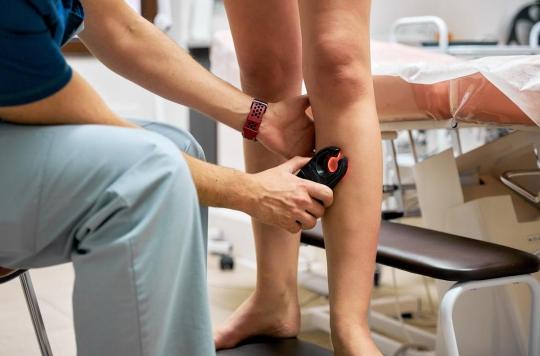American researchers have developed a new device to measure blood coagulation. The tool comes in the form of a smartphone app and only requires a single drop of blood.

- American scientists have developed an inexpensive device that can be done at home to test the level of blood clotting
- The device can be used directly from a smartphone and aims to facilitate the daily life of patients who must regularly monitor their blood coagulation.
Developed in the United States by scientists at the University of Washington, this test contains a plastic accessory whose role is to hold a tiny cup under the smartphone camera. To use it, patients must add a drop of blood to the cup provided, which has a small copper particle and a chemical that triggers the blood clotting process.
The phone’s vibrating feature shakes the beaker, while the camera monitors the movement of the particle, which slows down and then stops as the blood clot forms. The researchers demonstrated that this method is within the accuracy range of standard instruments in the field.
The whole objective of this new device is to provide an inexpensive and easy-to-use device, based on an operation similar to that of the tools used to monitor blood sugar for diabetic patients and who require pricking the finger to obtain a drop of blood.
A device tested on 140 patients
The researchers experimented with this method on several blood components, including plasma, because of its transparent appearance. The researchers tested the device using the plasma of 140 anonymous patients. The team also examined plasma from 79 patients with known blood clotting problems. In both cases, the test gave results similar to tests already available for sale.
This device, the principle of which is described in This article, must still be validated, in particular with tests carried out in the laboratory. The next step is to work with patients to test this system at home. The designers of the test are also considering a system to offer their device to countries with more limited resources than the United States.
To avoid heart complications related to blood clots (stroke, heart attack etc.), millions of Americans are prescribed anti-coagulant drugs, such as warfarin. This drug is not perfect, however, and patients should be tested frequently to ensure that their blood is in the correct clotting range.
.















